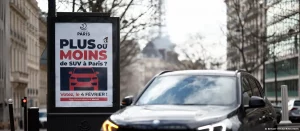Conversations in a weekend village — Interaction10 impressions
Interaction10 is over. Four days of presentations, workshops, games, installations stimulated vivid exchanges of ideas and reflections on the changing landscape of interaction design. Hosted in beautiful downtown Savannah by the international Interaction Design Association and Savannah College of Art and Design (SCAD), the conference set the stage for lively face to faces encounters, practice discussions and sensory southern food discoveries. Deep thoughts and constant twittering.
Co-chairs Bill DeRouchey (Ziba Design) and Jennifer Bove (Kicker Studio and a graduate of Interaction Design Institute Ivrea) moderated a salon style conference across several historic venues getting the participants out onto the squares and into the charming nooks of Savannah. SCAD has over the years preserved historic buildings and filled them with live through their educational programs such as those in Interaction Design and Service Design, led by professors such as Dave Malouf, Jon Kolko and Diane Miller. A great experience! The following notes give some impression on select highlights.
Learning from the past – Talk to me
Paolo Antonelli, senior curator of architecture and design at MOMA, laid out her exhibition plans charting the ‘subtle, subliminal ways, things talk to us’. Her talk showcased outstanding examples of how objects and interactions changed our way of seeing, mapping and explaining the world. She traced the impact of networks and systems on our capability to make and mix worlds to the shifting face of things. Examples range from Muriel Cooper‘s Visual Language workshop at MIT to Ben Fry‘s scientific information visualizations, and from the changing nature of prototyping via open source design tools Processing and Arduino, visionary scenarios such as Apple’s 1087 Navigator video to Applied Minds Touch landscapes. Take her title ‘Talk to me’ literally – Paola is looking for visionary artefacts from the history of interaction design.
Our scattered distribution of memories – The 40 year old tweet
Is there a life after the half hour half-life of tweets? How to approach your parents’ Flickr collection or find the heirloom experiences in your grand parents’ SMS exchanges? How does the web of metadata become part of our reminiscences years later? Richard Banks of Microsoft Research Cambridge explored in several prototypes the sentimental value, burden and sense of obligation digital exchanges will pose to future generations. Matt Cottam extends this search to heirloom electronics and our design capabilities to give modern products greater longevity and meaning.
Making it – Designing for the web in the world
Timo Arnall, Kevin Cheng, Ben Fullerton, Gretchen Anderson and Raphael Grignani offered diverse strategies to engage people’s experiences of physical products and digital services.
Timo Arnall explored in the Touch project controversial issues of technology usage such as leaking RFiD fields and the tangible experience of invisible data. Which kind of graceful interactions remain when a connected object goes offline or is without power? In his research and work with Berg, a London based interaction design studio, he proposes that interactive objects need to provide an immediate tangible experience even if not in use, that the purpose of being connected and data sharing should become obvious, and that long-term services and data visualizations provide feedback loops.
Twitter’s Kevin Cheng gave an excellent overview about the challenges and opportunities of Augmented Reality (see also his book in progress). He documented how context based smartphone applications expand our experience spaces such as in Yelp, Nearby, Layar, Arg DJ, Lego selections in retail stores, a USPS shipping box simulation, and ARhrrr games. Challenges are the lack of design patterns, glanceable interfaces and usability issues.
Gretchen Anderson, IxD director at Lunar, showcased our visceral reactions to facial features – ‘those key things your users see first’ – in products. What is the impression which we are giving? What can we understand at a first glance? Imbuing objects with a sophisticated character can enhanced the storytelling potential and interaction magic.
According to Bruce Sterling ‘Sense of wonders have short shelf life’. Our search capabilities have undergone dramatic change. Peter Morville of Semantic Studios spoke about the future of search. He introduced various behavioral and design patterns from his latest book Search Patterns. What we find, changes what we are looking for. How will we search in the future – feels like, tastes like, looks like, sounds like, smells like? Multi-sensory search is an untapped area of exploration – moving search beyond the web.
ITP professor Tom Igoe demanded to extend open source design to products and services to enable public knowledge and participation in the modification and/or reproduction of a product. Consequences might be flexible warranty agreements, impact on recycling and reverse engineering, or community patent reviews. Practical layers of openness need to include the whole value chain from physical construction, bill of materials, code, extendibility and reprogrammability, API’s and communication protocols, interoperability as well as design and interaction guidelines. This also requires to address frequent usability issues of open source projects.
From observing failures to provoking them was Nicholas Nova‘s contribution in addressing product non-usage, real-time accidents, traces and individual blame bias. ‘Failures are often overlooked in design research’. He proposed to actively provoke failures as a design tactic and to observe responding people’s behaviors.
Designing for the next billion
Nokia Design has over the years embraced ethnographic research and design discovery processes to shape mobile experiences and accelerate decision making processes. Raphael Grignani, head of Nokia’s San Francisco design studio, engaged workshop participants in exploring incremental and radical design innovation through community-based ethnographic design approaches. Nokia sends 3-4 times per year design teams to search for extreme behaviors in remote locations in Africa, Asia, Latin America and eastern Europe. Raphael guided us through the design process – discover, define, develop and deliver – with examples from the open studio project – My mobile phone, to Lifeblog to Remade and Homegrown.
See also:
– Patterns in UX Research
– Deconstructing Analysis Techniques
– Mobile Literacy
– Homegrown people planit profit
Processes and reflections – Design is the process of evoking meaning
Nathan Shedroff, chair of the MBA program in Design Strategy at California College of Arts in San Francisco, started of the row of thought leaders in situating meaning, behavioral change and sustainability as key challenges for interaction designers. How does a more meaningful world look like? Or a post consumer society?
Easy answers are difficult to come by. Next year’s conference needs a track of fast paced inspirational show & tells and the design thinking behind it. Dan Hill from Arup came closest in establishing a vision of a new soft city, merging multi-sensor interaction design ‘with architecture, planning and urbanism informed by a gentle ambient drizzle of everyday data’ – alive to the touch of its citizen. In his closing talk he exhibited a range of responsive well-tempered environments supporting civic relationships between individuals and communities around them. Examples of his call for civic sustainability feedback loops are projects in Barangaroo, the State Library of Queensland and the Sydney Metro in Australia, Arup’s contribution to the Masdar city centre, and the low2no carbon emissions project for Helsinki Harbor by Arup, Sauerbruch Hutton and Experientia.
A further exploration of the poetics of space were Kendra Shimmell‘s staging of interactive environments sensitive to movement and intent. Trained as a ballet dancer she presented motion capture studies in real time. Every movement unleashed auditory qualities in the space. A blink of an eye turned into sound, a raise of an arm provoked a tonal scale, fast movements elicit under her control musical compositions. Robert Wechsler provided the artistic motion tracking software.
‘You find things that you are nor looking for, when you are not looking’. Dave Gray continued the playful approach to innovation in his presentation of Knowledge Games: The visual thinking playbook. Fuzzy goals can lead to prospecting unexpected sensory, emotional and functional discoveries. Unfortunately he illustrated his engaging talk with a glorification of the AK47 as a ‘powerful tool of change’. His agnostic design philosophy hides an ethical ambivalence and repositions designers as hired hands of industry who do whatever is needed – even weapons of mass destruction. Can’t we find ethical examples which enable people, but don’t kill?
Chris Fahey applied the Uncanny Valley hypothesis of robotics to interface design. As interfaces behave eerily humanlike, people find them repulsive until they become more realistic representations of human behaviors. Human interface need to be ‘responsive to human needs and considerate of human frailties’. Qualities are sentience – the ability to feel subjectively, intimacy and personality. Character and personality may imbue interfaces with meaning and make them memorable. Now just watch your step, the uncanny valley is calling.
Ezio Manzini spoke about our growing desire for de-intermediated relationships between consumer and producers. Examples range from neighborhood markets and festivals, to community supported agriculture, urban farms, collaborative welfare servicesm etc. Digital platforms become catalysts of social resources and can support our vision of sustainable futures. Keywords to describe these futures are small-connected-local-open. Small-local interweaves issues of scale, relationships and identities, generally associated with control of a smaller set of variables and therefore supporting happiness. Open-connected outlines the rise of new organizational forms, whereas small-connected establishes nodes in a network society with the density of these links becoming important. Local-open: in a sustainable society the local is open, the connected local – resulting in an increase of cultural diversity and dialog between cosmopolitan participants. Manzini called on us to design enabling systems and engage in programs such as the US Social Innovation Fund, funded with 50 million USD by the US Government as announced by Michele Obama: “The idea is simple: Find the most effective programs out there and then provide the capital needed to replicate their success in communities around the country, … By focusing on high-impact, results-oriented nonprofits, we will ensure that government dollars are spent in a way that is effective, accountable and worthy of the public trust.â€
If it’s not ethical, it is not beautiful. Jon Kolko expanded on Andrew Carnegie‘s “My heart is in the work” to ‘approach our work with philanthropic enthusiasm that would make Carnegie proud. Design for real cultural change starts by understanding how people really behave. He called on designers to emphasize with people, build trust and purposefully change behaviors. His heart is now in the new Austin Center for Design, a place for wicked problem solving.
Interaction11 is coming. See you on February 10-12, 2011 in Boulder, Colorado.




[…] a recent roundup of thoughts from the Interaction 10 conference, Jan-Cristoph Zoels […]
[…] | The design philosophy of the AK-47, originally uploaded by dgray_xplane. In a recent roundup of thoughts from the Interaction 10 conference, Jan-Cristoph Zoels […]